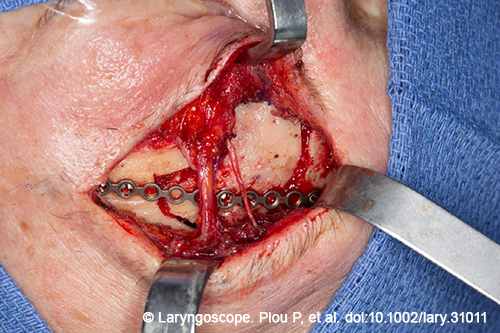
Figure 1. Intraoperative details of the approach and tumor excision. Pictured here is the bone flap reposition and fixation.
An osteoplastic bone flap of the anterior table of the frontal sinus was performed. There was tumor attached to the anterior table of the frontal sinus (bone flap), which was successfully removed. The inner surface of the bone flap was also drilled with a diamond burr to ensure complete tumor resection from the anterior table. The supraorbital nerve was preserved. Complete resection of the tumor was performed, with extirpation of the entire mucosa of the frontal sinus. A high-speed drill with a diamond burr was used to drill out the frontal sinus bony walls and to ensure complete tumor and mucosal extirpation.
Explore This Issue
December 2023During the cauterization of the posterior table of the FS, there was an area of small dural dehiscence and a cerebrospinal fluid (CSF) leak was observed. Dural synthetic substitute was placed through the opening and immediately stopped the CSF flow. A nasal floor free mucosal graft was also placed to reconstruct the defect. (The management of the intraoperative CSF leak is shown in the intraoperative video). Finally, the anterior table was repositioned and fixed with a titanium plate and microscrews.
No postoperative complications were reported, and the patient was discharged 24 hours after surgery with mild forehead hypoesthesia that recovered completely in three weeks.
RESULTS
The anatomical dissection showed the feasibility of the surgical technique. It allowed enough space for the osteotomy of the entire anterior table of the frontal with preservation of the supraorbital nerve. The lateral, superior, and medial limits of the frontal sinus, including the frontal sinus recess, were well exposed with this approach.
Some anatomical features and extension of the disease may limit the application of an endoscopic eyebrow approach. Frontal sinus anteroposterior dimension below 0.8 cm represents a limitation due to the acute angle and difficult surgical visualization. A pronounced convexity of the posterior wall of the frontal sinus makes it more difficult to manipulate the tumor, reducing intrasinus surgical maneuverability (Ann Otol Rhinol Laryngol. 2012. doi:10.1177/000348941212100802). ]
Moreover, the involvement of the posterior table of the FS entails the risk of CSF leak. As mentioned in the case description, CSF leakage was observed intraoperatively after the removal of the tumor that was successfully repaired through the open approach. Superior located frontal sinus CSF leaks are challenging for endoscopic skull base reconstruction.
In the three cadaveric specimens, the lateral limit of the FS extended lateral to the supraorbital nerve. The degree of exposure was the same as what is obtained with the bicoronal approach. The clinical case illustrated a successful application of this technique.